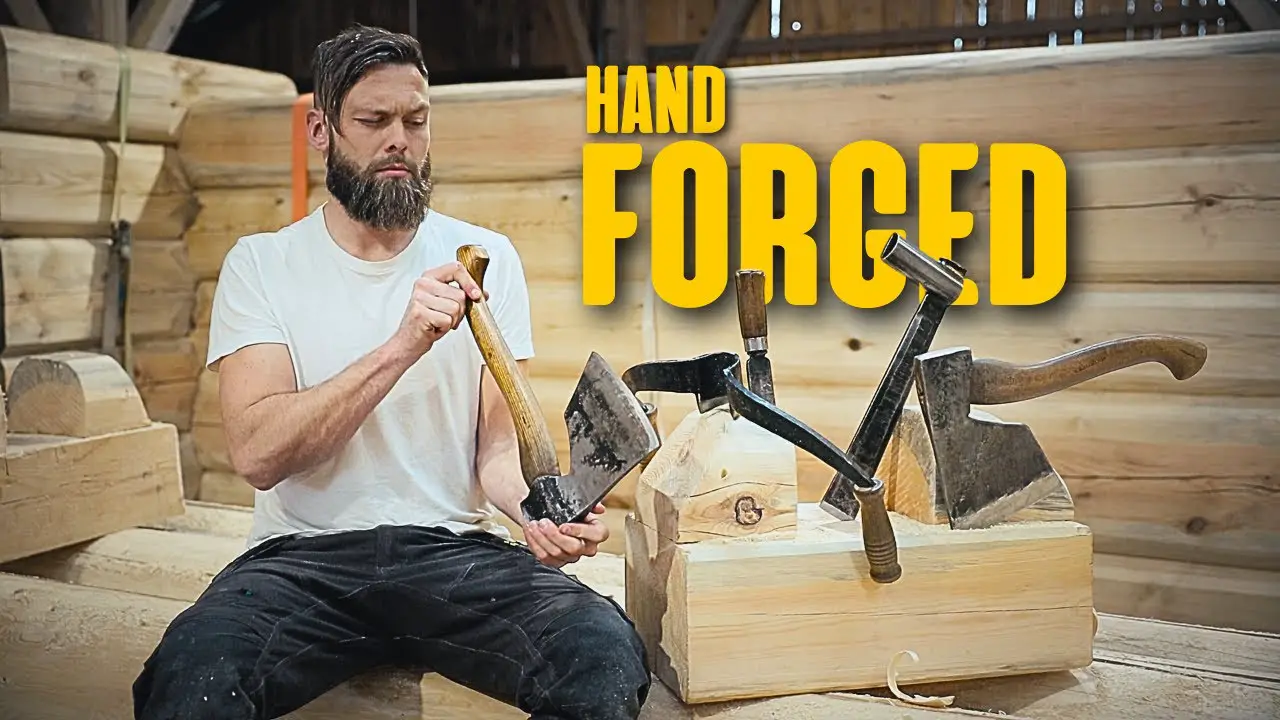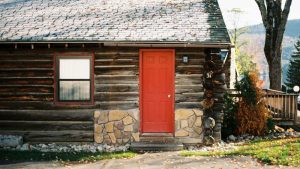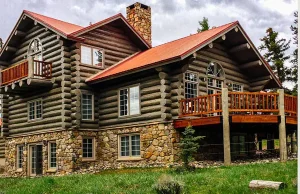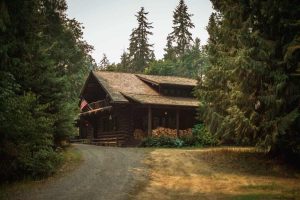Owning a log cabin is a dream for many. It represents a peaceful retreat, a connection to nature, and a simpler way of life. However, to keep that dream from turning into a costly nightmare, regular maintenance is crucial. The unique construction of log homes means they require specific care to protect them from the elements, pests, and the natural settling of the wood.
This guide will walk you through the essential tools and knowledge you need to maintain your log cabin’s beauty and structural integrity. By equipping yourself with the right gear and following a consistent maintenance schedule, you can ensure your rustic haven remains a source of joy for generations. We’ll cover everything from the basic tools every owner should have to the steps for cleaning, sealing, and preventing future damage.
Your Log Cabin Maintenance Toolkit
Having the right tools on hand makes any job easier, and log cabin maintenance is no exception. You don’t need a workshop full of expensive equipment, but a few key items will make your tasks more efficient and effective. Think of this as your essential toolkit for protecting your investment.
Inspection and Cleaning Tools
Before you can fix any issues, you need to find them. Regular inspections are the cornerstone of good maintenance.
- Ladders and Scaffolding: Your cabin has high points, and you’ll need a safe way to reach them. A sturdy extension ladder is a must-have. For larger staining or sealing projects, renting scaffolding can provide a safer and more stable platform to work from.
- Flashlight: A powerful flashlight is indispensable for inspecting dark corners, overhangs, and the crawlspace for signs of moisture, pests, or rot.
- Soft-Bristled Brushes: When it’s time to clean, you need brushes that can remove dirt and pollen without damaging the wood’s surface. Long-handled, soft-bristled brushes are perfect for this.
- Pressure Washer: A pressure washer can be a huge time-saver for cleaning logs, but it must be used with extreme caution. Use a low-pressure setting (under 500 PSI for softwoods like pine and 1000 PSI for hardwoods) and a wide-angle fan tip. Never hold the nozzle too close to the wood, as this can cause it to splinter and force water deep into the logs.
- Buckets and Hoses: You’ll need plenty of water for rinsing, so have a few buckets and a reliable garden hose with a spray nozzle ready to go.
Repair and Sealing Tools
Once your cabin is clean and inspected, you’ll need tools for repairs and sealing.
- Caulking Gun: A high-quality caulking gun is essential for applying chinking and caulk to seal gaps between logs. A smooth-rod, dripless model will make the job much cleaner and easier.
- Sealant and Stain Applicators: The best tool for applying stain depends on the product and your preference. Options include high-quality brushes designed for stains, paint pads, and airless sprayers. Sprayers offer the fastest application, but you will still need to back-brush the stain into the wood to ensure an even and deep application.
- Moisture Meter: This is one of the most important tools a log home owner can possess. A moisture meter allows you to check the moisture content of your logs. Wood rot begins when moisture content exceeds 20%. Regularly checking your logs, especially in areas prone to water exposure, can help you catch problems before they become severe.
- Putty Knives and Scrapers: These are useful for removing old, failing caulk or chinking and for applying wood putty to small cracks and holes.
A Step-by-Step Maintenance Guide
With your tools ready, you can tackle the core tasks of log cabin maintenance. Following a structured process will ensure you don’t miss any important steps.
Step 1: Clean and Inspect
Start by giving your cabin a thorough cleaning. This removes dirt, pollen, and mildew that can trap moisture and degrade the finish. Use a specialized log cleaner or a simple solution of water and a mild detergent. Gently scrub the logs with your soft-bristled brush and rinse thoroughly from the top down.
As you clean, inspect every inch of your cabin. Look for:
- Gaps in Chinking or Caulking: Check the seals between logs and around windows and doors.
- Signs of Pests: Look for tiny holes, sawdust, or insect nests. Carpenter bees, termites, and powderpost beetles can cause significant damage.
- Rot or Soft Spots: Use an awl or screwdriver to gently probe any discolored or damp-looking areas. If the wood is soft and spongy, you have rot.
- Up-Facing Checks: Cracks (or “checks”) are a natural part of logs as they dry. However, checks that face upwards can collect water and should be sealed with a flexible caulk.
Step 2: Seal and Stain
After the logs are completely clean and dry (use your moisture meter to confirm they are below 18% moisture content), it’s time to protect them.
Choosing the right stain is critical. Look for a high-quality, breathable stain designed specifically for log homes. These products protect against UV rays and moisture while allowing the logs to breathe, which prevents moisture from getting trapped inside.
When applying the stain, follow the manufacturer’s instructions carefully. As mentioned, even if you use a sprayer, it’s vital to back-brush the stain into the wood. This ensures the product penetrates the pores and provides a consistent, durable finish. Pay special attention to the log ends, as they absorb water more readily than the sides.
Step 3: Implement Preventative Measures
Once your cabin is clean and sealed, the goal is to keep it that way for as long as possible.
- Maintain Gutters and Downspouts: Ensure they are clean and directing water far away from the foundation. Splashback from the ground is a leading cause of rot in lower logs.
- Trim Landscaping: Keep shrubs, trees, and other plants at least two feet away from your cabin walls. This promotes airflow and allows the logs to dry out after it rains.
- Ensure Proper Drainage: The ground around your cabin should slope away from the foundation to prevent water from pooling against the logs.
Maintenance Schedule at a Glance
|
Frequency |
Task |
|---|---|
|
Twice a Year |
Inspect the exterior for issues, clean gutters, check seals around windows/doors, and look for signs of pests. |
|
Annually |
Give the cabin a light wash to remove pollen and dirt. Test the effectiveness of the water-repellent finish by spraying it with a hose. |
|
Every 3-5 Years |
Deep clean and apply a fresh maintenance coat of stain. The exact timing will depend on your climate and sun exposure. |
Frequently Asked Questions
How can I tell if my log cabin needs a new coat of stain?
A simple way to test your stain is to spray water on the logs. If the water beads up and rolls off, the finish is still doing its job. If the water soaks in and the wood darkens, it’s time for a new coat.
What is the difference between chinking and caulking?
Chinking is the wide sealant line traditionally used between logs, which is often textured to look like old-fashioned mortar. Caulking is a smoother, thinner bead of sealant typically used for smaller gaps, such as around windows, doors, and in checks. Both are essential for keeping your home airtight and watertight.
Can I use any exterior paint or stain on my log cabin?
No, it’s very important to use a product specifically designed for log homes. Standard house paints and non-breathable stains can trap moisture inside the logs, leading to rot. Log home stains are formulated to be breathable, flexible, and offer superior UV protection.
Protect Your Rustic Retreat
Owning a log cabin is a rewarding experience, and proper maintenance is part of that journey. By investing in the right tools and dedicating time to regular care, you are not just performing chores; you are actively preserving your home’s character, safety, and value. A well-maintained log cabin is more than just a structure—it’s a legacy.




